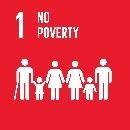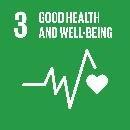Systems thinking is the ability to describe and/ or visualise a part of a complex reality, express that part of reality as a model, understand the model as a system, use the model to explain the behaviour of the system, anticipate the behaviour of the system, and evaluate its impacts on sustainable development, identify potential points of, and types of interventions, generate options to act, assess their impacts in the frame of sustainable development, and decide whether further actions are necessary or not.
What is the aim?
To enable learners to:
- become aware of the concept of sustainable development,
- become aware of various frameworks and their respective criteria (presented in the Worksheet “Measuring Development”) to assess development and sustainable development, and their strengths and limitations, and
- evaluate the current and future behaviour of selected parameters for their impact on sustainable development.
Activities, tasks, and suggested learning methods
Note for the Facilitator
This step is quite ambitious because we will deal with two levels of complexity. On the one hand, the two perspectives of work (potato chips production and potato chips nutrition) will be interlinked. On the other hand, the learners must become familiar with the concepts of measuring standards of living, development, and sustainability. The learners are expected to use a suitable framework to evaluate the contribution to sustainable development (or otherwise) from the contemporary chip systems. Conducting some preparatory activities on sustainable development would be helpful to adapt to the chips system context.
You can form new groups to mix those who earlier worked on chips production with learners who worked on nutrition for the next group work sessions.
Activity 1: What is sustainable and what is not sustainable?
Materials
Copies of
- Information sheet “What is sustainable development?”
- Worksheet “Potato Chips: Sustainable or unsustainable?”
Procedure
- Let learners form pairs and read the text “What is sustainable development?”
- Next, share with the learners the worksheet “Potato Chips: Sustainable or unsustainable?” and let them work individually to decide which activities are sustainable and which are unsustainable, and give reasons for their decisions.
- Each should also try to list three more activities that can be deemed sustainable or unsustainable.
- They should compare results with their partner and discuss their reasoning. Encourage them to think about if they would like to modify or add to their reasoning, and to list if any questions arise as they try to assess whether any action or consequence adds to sustainability.
Activity 2: Matching pictures with SDGs
Materials
Photos and laminated cards of each SDG
Procedure
- Print out the icons for all the SDGs (arranging 2 on each page, so they are large enough for the activity) and photos of a range of human activities. You may like to check the pool of selected photos available at this link. https://docs.google.com/document/d/1u0eWGsIIgiyLLThHtT8Hx6G28HrZtfvHxgErvMcVdWA/edit?usp=sharing(TO BE CREATED ON THE SYSTEMS SITE).
You can choose and print out one or more sets, depending on the number of learners.
- You may want to add or choose other photos from your own photo pool or resources on the internet. Pexels https://www.pexels.com/and Pixabay https://pixabay.com/ are two possible sources of photos.
Tasks
- Spread the selected photos on the floor.
- Invite a pair of learners (one each from those who were exploring chips production and nutrition earlier). Their task is to:
- Look through the photographs and find pairs of photographs, which are linked to one or more of the SDGs
- They may locate two or three pairs, with one photograph representing a valuable contribution and the other photograph representing a counterproductive activity to the aim of the SDG.

- Invite each pair to present the results of their photo matching and their reasoning. Let the whole class participate in the discussions and reflections.
After this matching exercise, you may ask learners to reflect, which SDGs are related to the topic of potato chips production and consumption on the basis of the knowledge they have.
Guiding questions
- What is the average income of a factory worker, farm worker, driver, or merchant?
- Are potatoes grown organically, or by using chemical fertilizers and pesticides?
- What is the gender ratio of workers engaged in potato chips production?
- Who eats more potato chips, men or women? Why is this relevant?
- How does the way we eat contribute to climate change?
- Why is it important to know the ingredients in what we eat?
Activity 3: Analyse Potato Chips production against the SDGs
Print out the Worksheet “SDG Analysis Matrix”
Take a look at the potato chips system and analyse which elements from your systems models (production line and nutrition line) contribute to a specific SDG or are counterproductive to the SDG targets. Write your conclusion in column one and two, in the third column you can identify and write the element in your systems that contribute to one SDG and pose a problem for another SDG.
Use the various elements in your models (production line and nutrition line), and see how these may match with the different SDGs.
Further Leading questions
- How can I as an individual influence the improvement of SDG?
- How can my actions have an impact in my community and help in achieving the SDGs for the future we want?
- How can we enjoy a pack of sustainable potato chips? Will it be healthier?
- How can the production of potato chips be improved for people and the environment?
- How can the quality of life be improved for workers, my community and me?
- How can we change the potato chip system for a more sustainable future?
Example
Here are some examples of how to complete the matrix.
| Potato chips: SDG-Analysis matrix | |||
| SDG | Elements from your vision that contribute to the SDG | Elements from your vision that are counterproductive to the SDG | Make a note of any elements from your vision that contribute to one SDG but pose a problem for another SDG |
 |
Increasing global markets for potato chips might generate incomes among the poor farmer communities | Worldwide increase of snack consumption may increase health problems | |
 |
Increase of potatoes as steady food will contribute to world food security | ||
 |
processing of potatoes as unhealthy snacks will increase diseases in human society | ||
 |
Nutrition labelling helps the consumer to make inform decisions towards healthy food consumption | ||
 |
|||
 |
Increased cultivation of potatoes to match the demand may cause water shortage in high production countries or regions | ||
 |
|||
 |
Better working conditions and fair wages contribute to better living standards of farmers and labourers in the farming industry | Regionalisation in production might cause poverty in countries, which were former lead countries for exporting potatoes | |
 |
|||
 |
|||
 |
|||
 |
|||
 |
Increasing potato production and packaging for snacking industries cause environmental problems, such as waste increase. The recycling of the package will cause CO2 emissions | Increasing monoculture development might lead to intensive use of soil and land. | |
 |
More packaging waste will end up in the ocean | ||
 |
|||
 |
|||
 |
|||
Worksheet
Potato Chips: Which activities are sustainable, and which are unsustainable?
Decide and give reasons for your decision.
Add more examples and share and discuss within your group.
| Sustainable | Activity | Unsustainable |
| Eating chips produced with potato starch and not with fresh potatoes | ||
| Increasing demand for potato chips that creates more jobs in the farming and transportation sector | ||
| Organic production of ingredients for potato chips will grow in the near future | ||
| Schools organise their own catering service for lunch | ||
| The increased development of new flavoured chips improves the economic situation in countries like India and strengthens social development | ||
| More countries in the world import chips from leading production countries to serve the need for lunch snacks | ||
| Lunch snacks served are reduced to potato chips packages of several flavours. | ||
| Supply Chain Act (in Germany) which commits German manufacturers and their business partners to act according to environment and social protection standards | ||
| Introduction of Nutri-Score to influence consumer decisions towards more healthy snacking. | ||
| Name 3 activities which can be put in the same categories | ||
|
|
||
|
|
||
|
|
||

